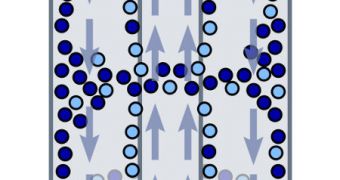Israeli investigators have recently developed a new method for controlling spinning molecules, which resembles how people control the trajectory of Frisbees when they throw the toys.
When playing, children usually know instinctively, or through trial-and-error, that the angle at which the Frisbee is thrown plays a very important role in determining the trajectory the flying disk will take.
So why not control particles in the same way you control the toys, the researchers now ask. They say that a fundamental limitations that prevented work in the field has now been exceeded.
As Frisbee-like objects become smaller and smaller, nearing the nanoscale, or even higher degrees of miniaturization, the physics affecting their motions changes.
That is to say, air molecules tend to become viscous rather than gaseous, and inertia stops playing such an important part. As such, many believed that there was a fundamental limit on how small structures of this type can be manufactured.
But the recent study proved that this was not the case. The work was led by Weizmann Institute of Science expert physicist Johannes Floss, Technology Review reports.
The investigators argue that, in fact, it's rather simple to control the motion of a spinning molecule at the nanoscale or lower in very much the same way you control a Frisbee.
Scientists have already produced in the past methods of aligning the spin of molecules inside a gas, by zapping them with laser light of specific properties.
What Floss and his team discovered is that the motion of molecules could be controlled by passing them through an electric field, most often one produced by another laser.
What the current will do is play a role analogous to that of air passing under a Frisbee. By controlling its intensity gradient, the researchers become able to control the “flight path” of the molecule.
“A similar technique is used by Frisbee players finessing the tilt of the spinning disc for directing it into a pair of waiting hands,” Floss says.
The strength of the field, its inclination of rotation and the mass of the molecule are all factors that contribute to the ultimate trajectory the spinning molecules will take.
The excellent news in all this is that all of these factors can be controlled externally. The discovery has considerable applications, the researchers say.
One could envision using it to split various types of isotopes apart, as well as for replacing the centrifuge in producing enriched uranium, they conclude.

 14 DAY TRIAL //
14 DAY TRIAL //